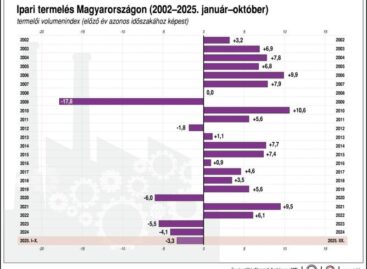Tourism and energy: New impetus for Southern Europe
The concept of the “global North” and the “global South” has long played a decisive role in international economic thinking, separating economically developed and developing countries. However, in recent years, two striking trends in Europe – high energy prices and the resurgence of tourism – have fundamentally overturned this old paradigm. While previously the northern and western countries pulled the southern regions with them, today Portugal, Spain, Greece and Croatia are the economic engines of the continent, the Telex article points out.
The “Brandt Line” and the changing economic balance

The origins of the terms “global North” and “South” can be linked to the Brandt Line, which divided the countries of the world according to their economic development. The North was characterized by rich countries such as the United States, Western Europe and Japan, while the South included Africa, Latin America and most of Asia. This division was also noticeable within the European Union: Germany, the Netherlands and the Scandinavian countries represented the “developed north”, while Greece, Portugal and Spain represented the economic “south”. However, the events of the 2020s brought a new direction.
Tourism and energy: New impetus for Southern Europe
Tourism, which had been subdued during the coronavirus pandemic, exploded after 2022. People were hungry for travel experiences, and global tourism revenues exceeded 2019 levels by 2023. At the same time, the Russian-Ukrainian war caused energy prices in Europe to skyrocket, especially in the industrialized northern countries. Together, these two factors led consumers and investors to turn to services and tourism, which brought economic recovery, especially to the southern countries.
Portugal, Spain and Greece have stabilised their budgets with a boom in tourism, while Albania and Croatia have also generated significant economic growth through tourism. In contrast, Germany, which was once the continent’s industrial powerhouse, has declined due to high energy prices and a decline in industrial competitiveness.
Hungary: Average in tourism, challenging in industry
Hungary’s situation presents a mixed picture. Although tourism is one of the few sectors showing growth in the domestic economy, the country’s attractiveness is only average compared to the EU. Nearly 18 million tourists arrived in Hungary last year, which is an increase, but the share within GDP – estimated at 7-13% – is not outstanding. In contrast, the current situation of Hungarian industry is less favorable, which may pose a challenge in the long term.
The future: A lasting trend or a temporary state?
Although the rise of tourism and the economic recovery of the southern countries seem to be a clear trend, it is questionable whether this will remain the case in the long term. Global warming, industrial transformation and changes in the energy market may all affect the economic balance of power on the continent. However, one thing is certain: the balance between “northern industry” and “southern tourism” will determine Europe’s economic future.
Visszajelzés küldése
Oldalsó panelek
Előzmények
Mentve
Related news
KSH: industrial production decreased by 2.7 percent in October compared to the same period of the previous year, and increased by 0.5 percent compared to the previous month
🎧 Hallgasd a cikket: Lejátszás Szünet Folytatás Leállítás Nyelv: Auto…
Read more >Visit Hungary: Hungarian tourism closes another record year
🎧 Hallgasd a cikket: Lejátszás Szünet Folytatás Leállítás Nyelv: Auto…
Read more >The 2024 tourism record was achieved in 11 months this year
🎧 Hallgasd a cikket: Lejátszás Szünet Folytatás Leállítás Nyelv: Auto…
Read more >Related news
Challenges of the retail sector: retail has become more crisis-resistant
🎧 Hallgasd a cikket: Lejátszás Szünet Folytatás Leállítás Nyelv: Auto…
Read more >NGM: conscious shopping for peaceful holidays, consumer protection advice for the Christmas period
🎧 Hallgasd a cikket: Lejátszás Szünet Folytatás Leállítás Nyelv: Auto…
Read more >How to avoid the hassles of online shopping?
🎧 Hallgasd a cikket: Lejátszás Szünet Folytatás Leállítás Nyelv: Auto…
Read more >






